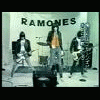Another Afghanistan.
Misunderstanding Russian Strategy?
Alexander Mercouris got excited by a Financial Times story, Military briefing: Russian losses mask Ukraine’s vulnerabilities, which he read as the UK press beginning to sow the ground for Ukraine losing the war. I’d hazard that most readers would see that as going a bit far, but this piece, despite its headline, does have some admissions of the sort we haven’t seen so far. Note that Mercouris objected strenuously to the framing, saying that the he knows the history of the “winter war” against Finland in the 1940s well, and the popular understanding of it is all wet. So skip over that section if you read the story at the pink paper.
One striking bit is that about halfway into the piece, experts admit that they’ve relied completely, as in over-much, on what passes as intel from Ukraine. It seems to be occurring to then only now that they should have treated it was a hermeneutic, given Ukraine’s need to present itself as winning, both to win Western support and to prevent troop desertions. From the Financial Times:
Ukraine’s information dominance has masked its losses: thousands of open-source images of exploded Russian armour have been taken by Ukrainian civilians, who are unlikely to post similar pictures of their own side’s losses. This has led to a natural bias in the online content being scrutinised by many analysts.
Ahem. My understanding is that the validity of these images is questionable. There are claims, at least some backed by actual supporting images, that purported kills of Russian equipment are often if not mainly shots from earlier in the Donbass conflict that have been recycled, or more important, Ukraine equipment losses depicted as Russian (remember most Ukrainian armaments are of Russian origin).
To put it more bluntly, this is the worst sort of visual evidence and too questionable to serve as a source for reaching conclusions about operational results….yet the Financial Times suggests it was not vetted.
Yet before that came a discussion of Russian versus Ukrainian military losses. The Financial Times makes clear the Ukrainians have considerably understated their losses:
Kyiv says it has lost 1,300 troops compared with an estimated 7,000 killed, wounded or imprisoned for Russia, according to US estimates. But western officials and analysts said the Ukrainian losses were probably far higher: most agreed that an equivalent loss rate to Russia was plausible, equating to about 10 per cent of Ukraine’s troops.
Keep in mind there is a bit of an apples and oranges issue when taking about losses; in the Scott Ritter video yesterday, he meant deaths. We’ll return to that in a bit.
Per Ritter, Ukraine has over 260,000 regular forces and 310,000 reservists, plus additional specialized teams. Even if you assume 10% fo 260,000, that’s 26,000.
Ritter from the outset has estimated Ukrainian losses as a large multiple of those of Russia, with losses for him being the death count. Ritter has maintained based on his work for years with the Russian military that they do not understate their own fatalities. And so far they are not much over 1000. Admittedly, in a modern war injuries are now more common than deaths. But the Financial Times and Western sources take the Ukrainian estimates of Russian losses at face value, when it’s well known in war that combatants routinely and greatly overstate the harm they are doing to their opponent.
The Financial Times also admits that Ukraine is having supply issues, but they aren’t admitting to the potential biggie, the way Russia has been destroying fuel depots:
Hundreds of Ukrainian tanks and vehicles had also been destroyed, said one Nato official. “I can tell you that western arms supplies to Ukraine are absolutely critical at this point,” he said….
Even the level of supply may be insufficient.
“Senior [Ukrainian] officials have told me that supplies of anti-tank and anti-aircraft weapons have slowed to a trickle and stocks are running low,” said Paul Grod, head of the Ukrainian World Congress, a non-governmental organisation. “This needs to be addressed as soon as possible — otherwise Ukrainian fighters will be confronting Russian tanks with just machine guns.”
Recent air strikes have hit the Antonov aircraft works and Artem arms factory near Kyiv and an aircraft repair plant near Lviv, indicating that Russia intends to cripple Ukraine’s munitions manufacturing capacity.
Finally, the article admits Russia is pursuing the same battle plan as it has from the outset, that it has not regrouped or fallen back to a Plan B:
The Kremlin has nevertheless repeatedly insisted its operations are going to plan. “I have seen no evidence that its overall intent has changed,” said one western defence official.
Why is this potentially significant? US commentators have depicted that the campaign has gone slowly because Russia didn’t bomb Ukraine into the stone age as we would have done on the first day. Another template being applied is map based: gee, there is a lot of open territory and cities not captured, so the Russians must not have gotten far. The press, for instance, depicts the Russian failure to capture Kiev as a sign of weakness, and does not pay much attention to Russia’s operations in the east (save for upset about allegations as to what is happening to civilians in Mariupol).
But again that assumes the objective is to take terrain. That was never a Russian goal. They wanted to destroy Ukraine’s warmaking capability, “denazify” and secure a commitment to no NATO and neutrality.
As Mercouris has maintained, and the Financial Times also mentions, Russian military uses Clasewitz as its strategy guru. Clausewitz argues the shortest path to success in combat was to subdue armies, not cities.
And Russia has, for instance, pointedly not been interested in taking Kiev. It’s parked enough troops around it that it could encircle and isolate Kiev if the Ukrainian soldiers were to abandon it to support the campaign in the east. It’s become clear for at least a week that the Russian intent for Kiev is to keep the Ukrainian troops there pinned down.
As the Financial Times mentions late in its story:
Perhaps Ukraine’s biggest tactical vulnerability is its Joint Forces Operation (JFO), where the bulk of Ukraine’s military assets are deployed just west of Donetsk and Luhansk. Russia was seeking to encircle Ukraine’s troops, western officials said, cutting them off from Kyiv and drawing them into open combined-arms combat, which plays to its battle groups’ superiority.
Crushing Ukraine’s forces in such a way would be as much of a victory as capturing Kyiv, some analysts said, invoking Carl von Clausewitz, the military theorist who saw the destruction of armies rather than the capture of cities as the fastest route to victory.
The Western press seems regularly to be painting happy faces on how Ukraine is doing in the east. Mariupol is lost, it’s just a mopping up operation now. The other main forces in Donbass are sufficiently well encircled that they can’t retreat and they are being divided into smaller cauldrons. Some sources claim they are also low on supplies; there’s no way to know but by all appearances, they are pretty well cut off.
Yet the press keep obsessing over cities, as a new over the fold story at the Financial Times attests: Military briefing: how the battle for Ukraine became a battle for its cities.
This vantage, which is not flattering to Russia, increasingly looks off base. Avoiding cities reduces civilian costs. If Russians can eliminate the Ukrainian army with Mariupol the only significant city it had to contest, that will serve the aim of sparing civilians.
It will be instructive to see what happens as Russia tightens the noose in the east. A win there would be hard for the West to dismiss, since it would represent at least half of Ukraine’s active forces and likely the majority of its seasoned ones.
https://www.nakedcap...n-strategy.html













